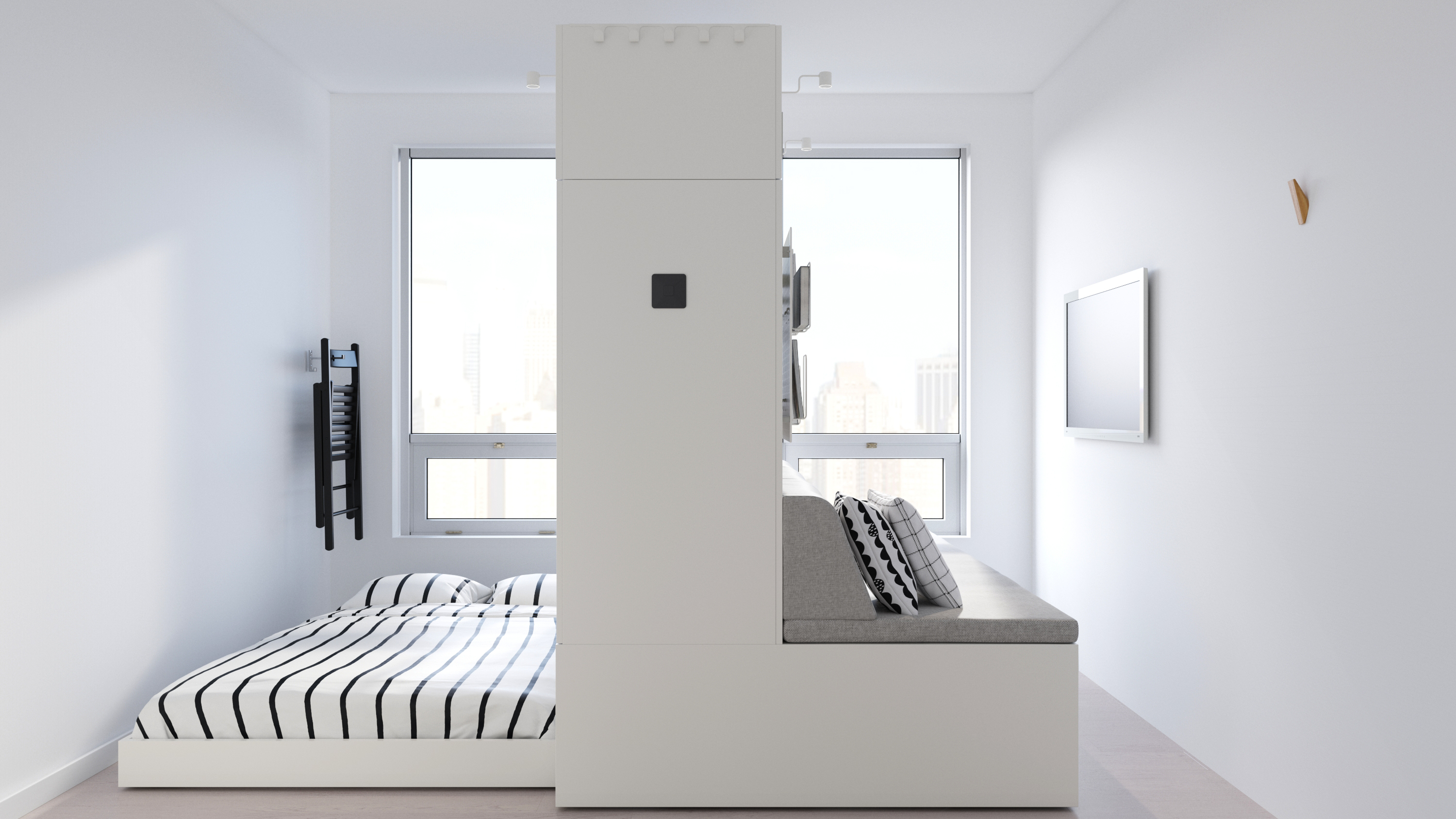Ikea is going to sell robotic furniture to maximize space for city dwellers

It can morph into a bed, couch, desk, or wardrobe, depending on which setting you choose.
The idea: The large storage system slides across a room, transforming into different pieces of furniture depending on which you need to use at that moment. It’s controlled by a touch pad and is designed to let people in cities make the most of the space in their apartments. At its full extent, it takes up 3 by 3.5 meters of space. It’s Ikea, so of course it has a fun name: Rognan (that’s a small village in Norway, if you’re interested). It was developed through a partnership with Ori Living, a US robotic furniture startup.
Can I get one? Not yet. It’ll launch in Hong Kong and Japan (where inner-city apartments are famously bijou) in 2020. And Ikea has yet to tell us how much it will cost.
The big picture: Cities are booming. At least 1.5 million people move to a city somewhere in the world every single week, and living spaces are shrinking to pack them all in. Ikea’s betting on a rapidly growing market.
Sign up here to our daily newsletter The Download to get your dose of the latest must-read news from the world of emerging tech.
Keep Reading
Most Popular
Large language models can do jaw-dropping things. But nobody knows exactly why.
And that's a problem. Figuring it out is one of the biggest scientific puzzles of our time and a crucial step towards controlling more powerful future models.
The problem with plug-in hybrids? Their drivers.
Plug-in hybrids are often sold as a transition to EVs, but new data from Europe shows we’re still underestimating the emissions they produce.
Google DeepMind’s new generative model makes Super Mario–like games from scratch
Genie learns how to control games by watching hours and hours of video. It could help train next-gen robots too.
How scientists traced a mysterious covid case back to six toilets
When wastewater surveillance turns into a hunt for a single infected individual, the ethics get tricky.
Stay connected
Get the latest updates from
MIT Technology Review
Discover special offers, top stories, upcoming events, and more.